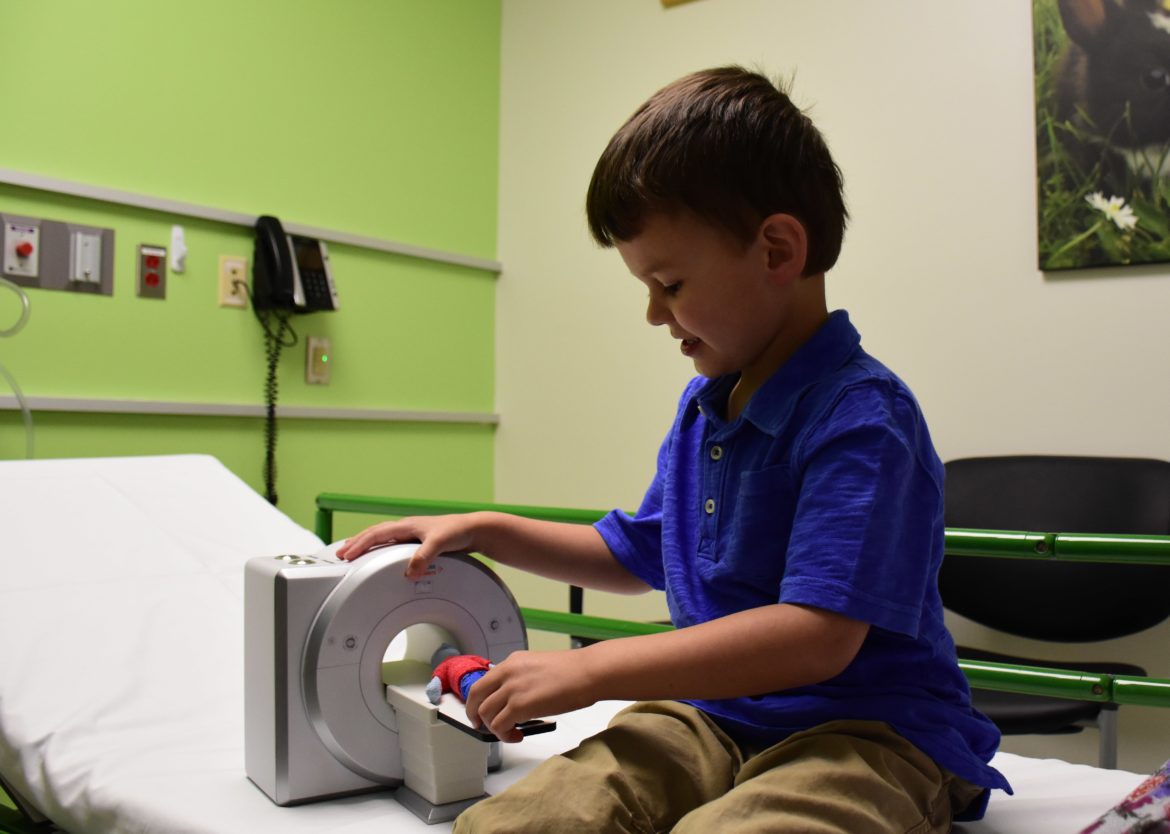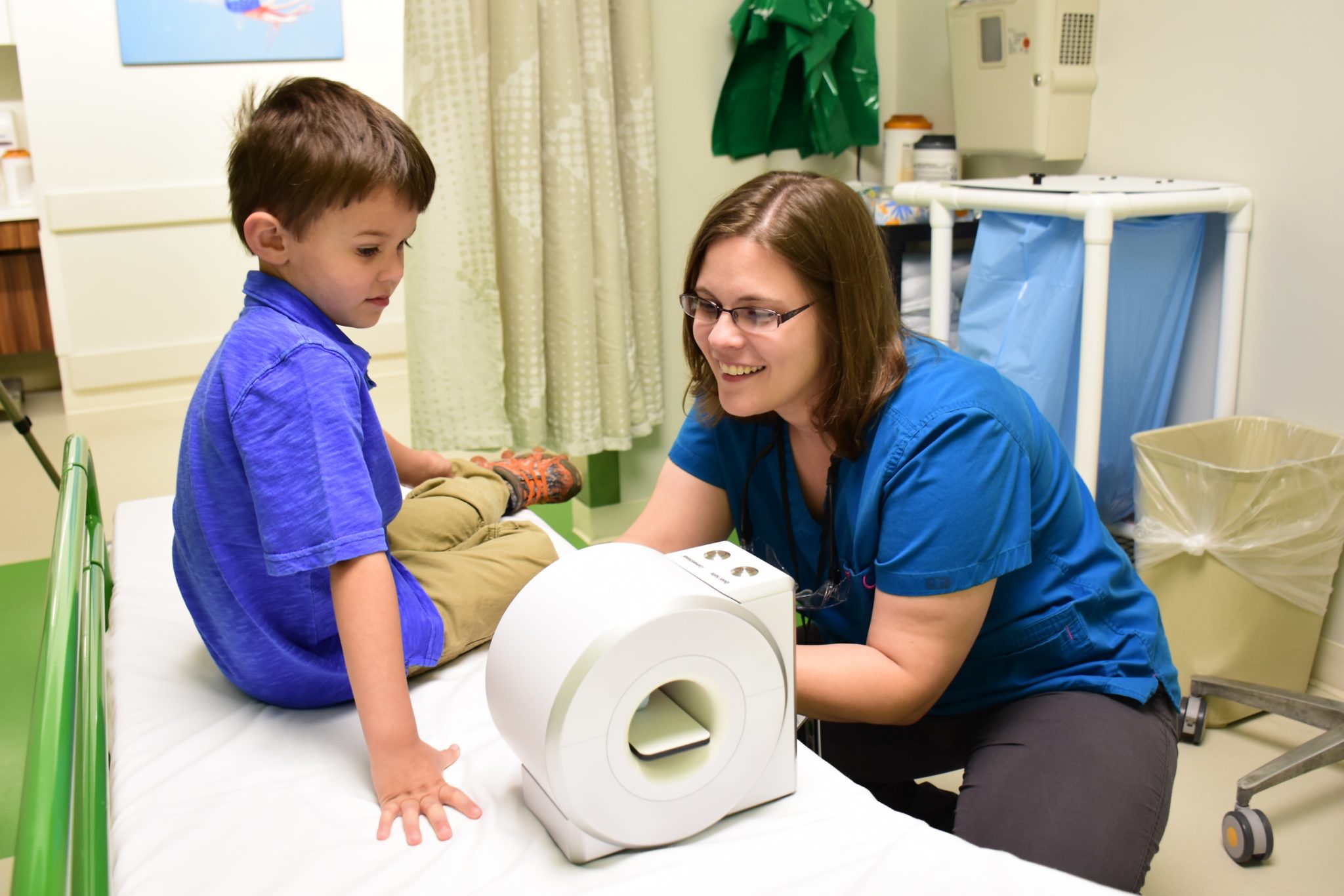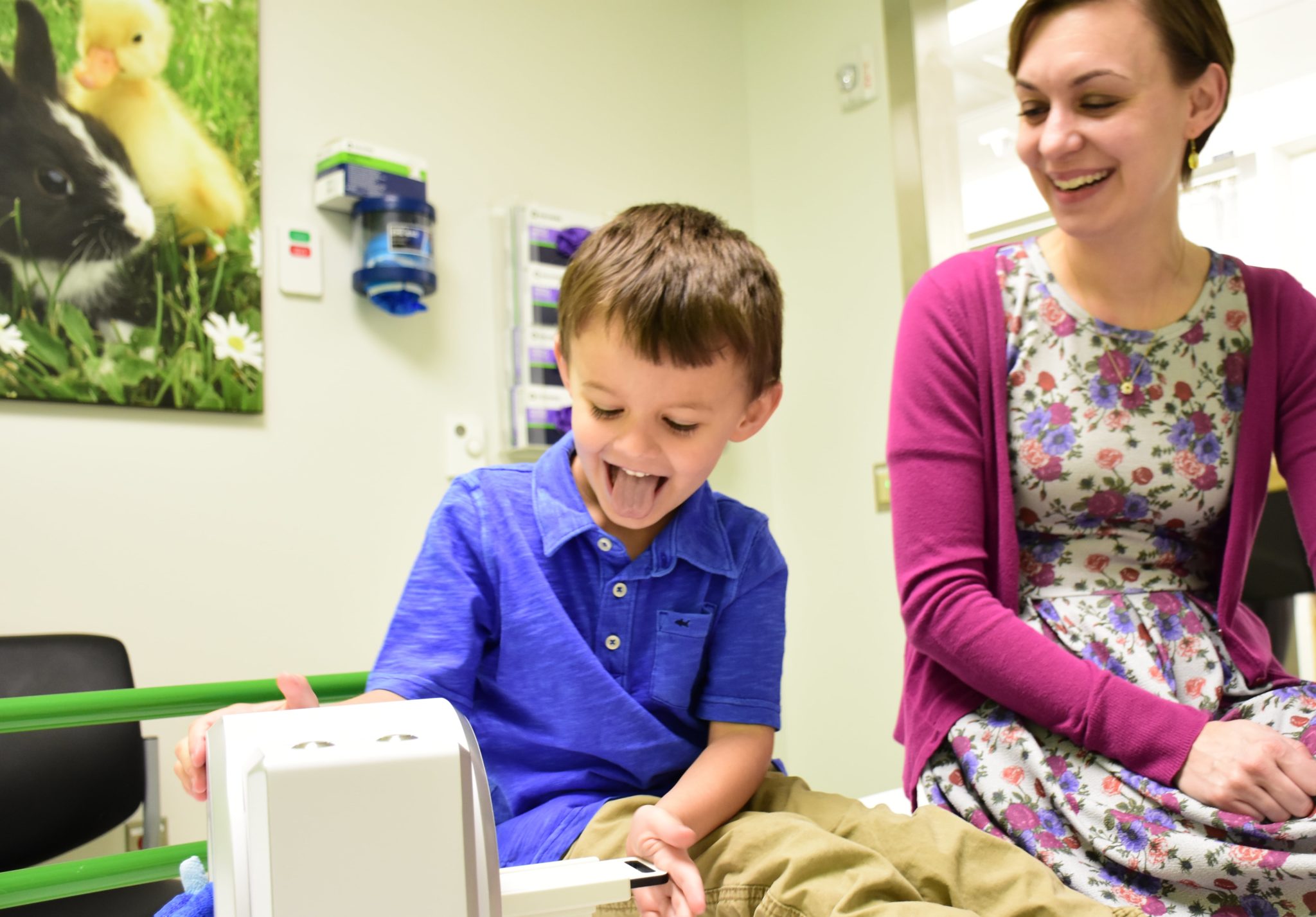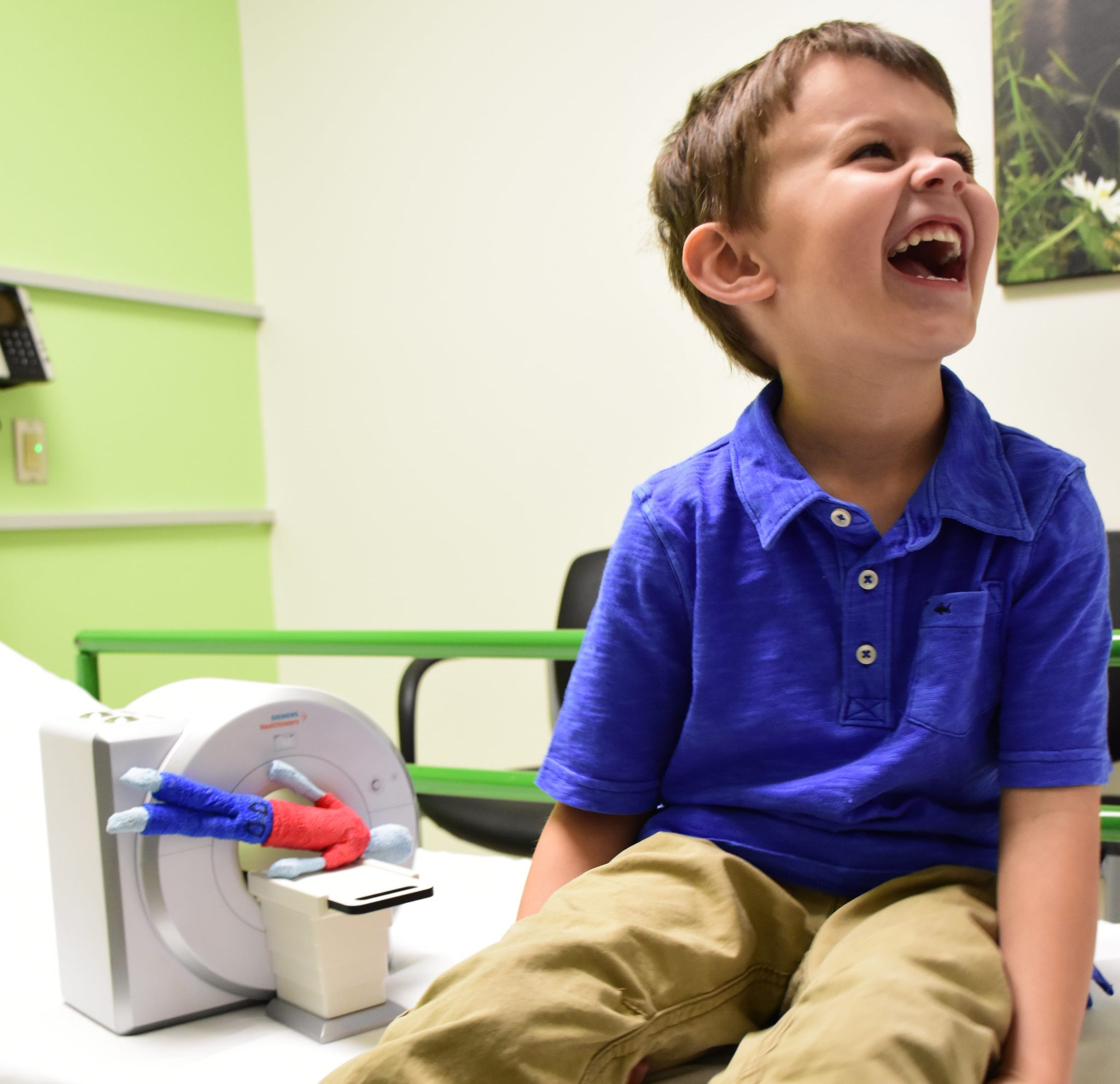Loud noises, a tunnel, strangers, and an unfamiliar place. It sounds like the beginning of a scary story! It’s no wonder kids get scared when they come for an MRI or CT Scan. Here’s one way the MRI staff at UVA is helping kids overcome MRI anxiety. We want kiddos to know what to expect!
Helping Kids Overcome MRI Anxiety Creatively
Exciting things are happening in the MRI department! Staff just got their hands on a doll-sized MRI model that can help show kids what to expect when they need an MRI.
MRI machines make loud and fast noises that make you think the entire machine is on the brink of a meltdown. These noises are actually part of how MRI works, so they are completely normal. But it’s also normal that these loud noises scare kids. (To be honest, they often scare adults). Kids push buttons on the model MRI and it makes the same noises as the real thing. When they know what to expect, it makes the whole experience less scary. This tiny model goes a long way in helping kids overcome MRI anxiety!
Removing the Scariness of Surprise
Right now, Child Life Specialists at UVA have apps on their phones that play the same noises an MRI machine makes. The model takes this idea a step further, because now a child can see and touch the MRI, pressing buttons, listening to the noises, and putting the doll through the machine—just like what they are about to do!
Jamie Weathersbee, chief MRI technologist, talked about how it’s hard to know how kids are going to react to the machine when they come for an exam. Some do just fine, watching a movie or listening to music during their scan. Others come in and become fidgety or nervous and need to be sedated so they stay still enough to get the necessary images. Ultimately, the staff works together to help a child complete the exam without sedation whenever possible.
That’s why a Child Life Specialist often comes to work with kids and their families to help each child through the exam in the way that’s best for them. With this new resource, the Child Life Specialist is better able to set every child up for success.
“It’s intimidating to walk into this room and see this big machine,” said Jamie. “So if kids can see it before and put their hands on it and know it’s not really that big a deal, hopefully once they get into the room it will be better.”
And let’s be honest. The model can help adults, too.






